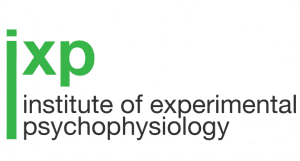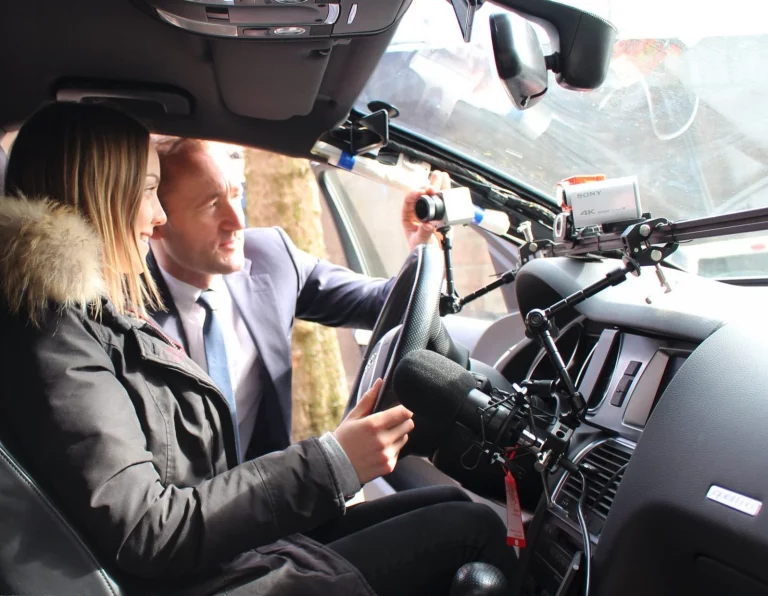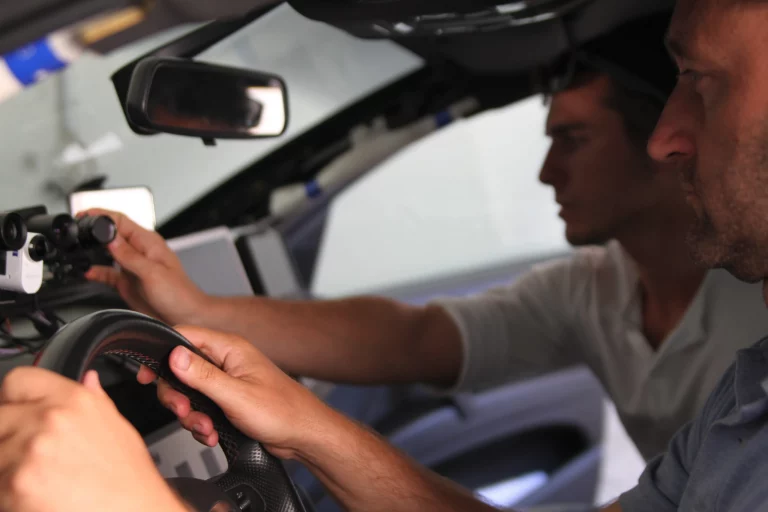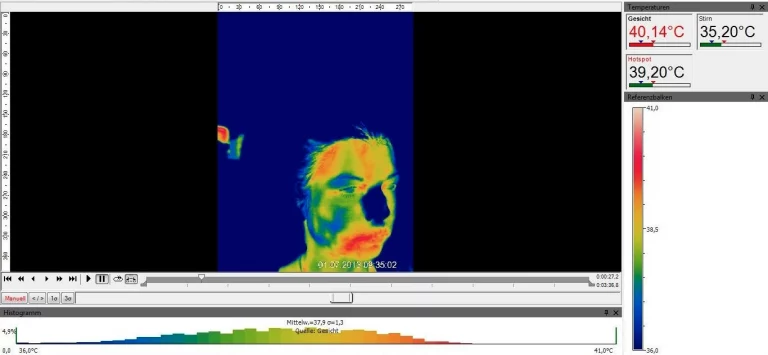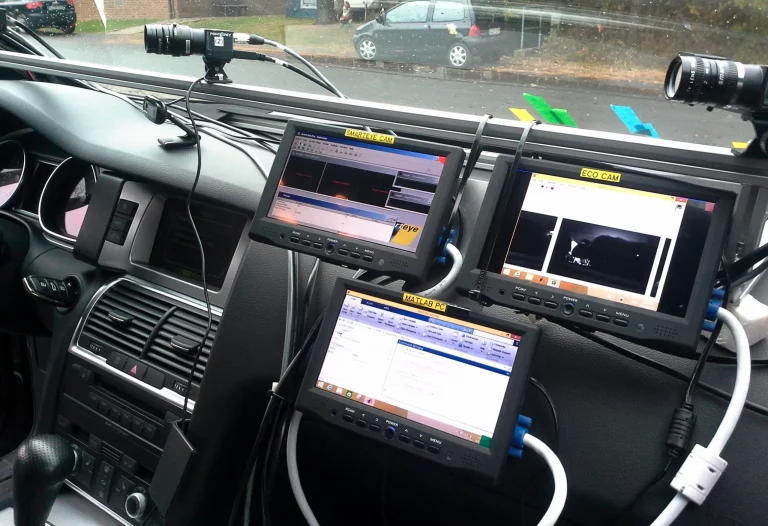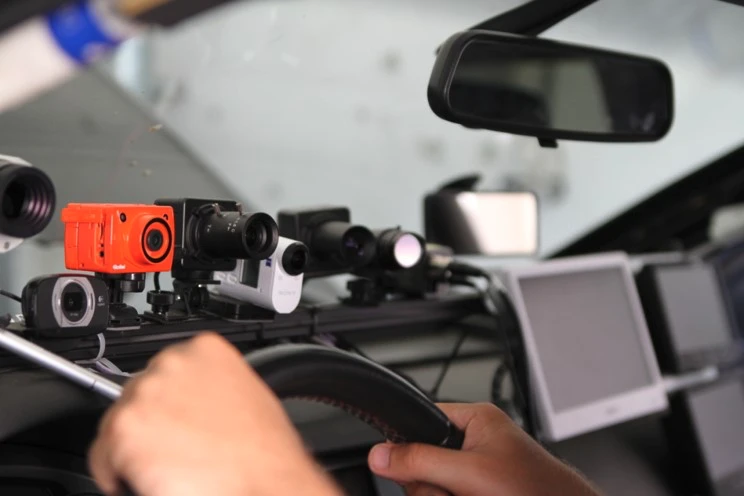
Driver Fatigue and
Microsleep Detection
Project Justification
Drowsiness and microsleep are among the leading causes of traffic accidents and significantly compromise road safety. Driver Monitoring Systems (DMS) that detect critical fatigue states are an essential first step toward implementing just-in-time adaptive interventions.
Identifying feasible and effective intervention techniques remains a key objective. This project investigates the effectiveness of various electrical stimulation methods and chronobiological light-based interventions to counteract microsleep while driving.
Through systematic evaluation, the project contributes to the development of evidence-based strategies for real-time fatigue management and improved driver safety.
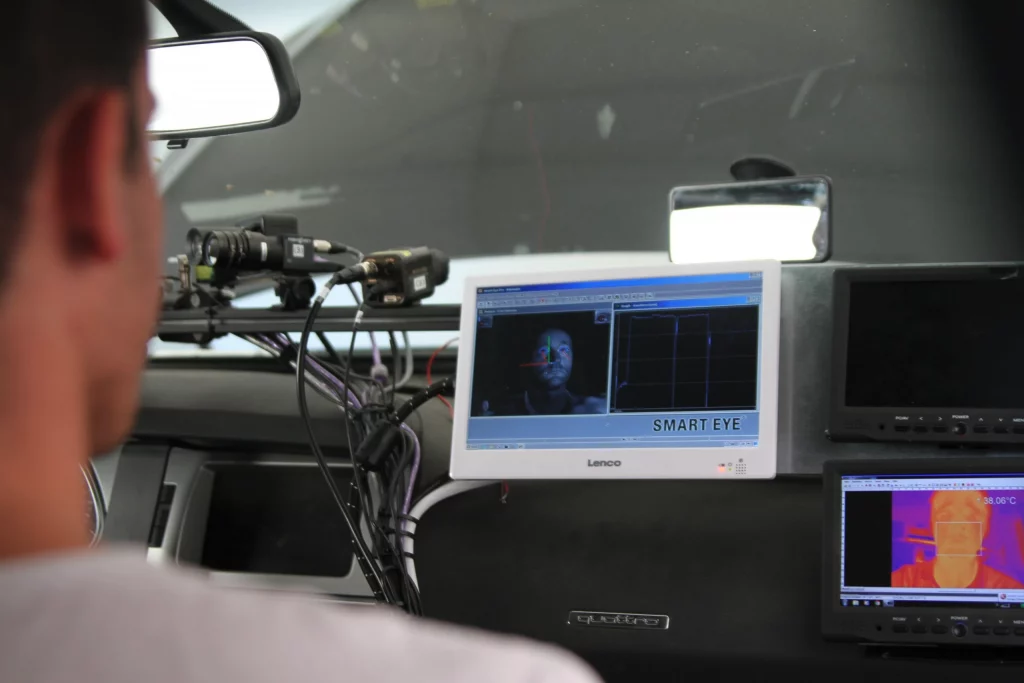

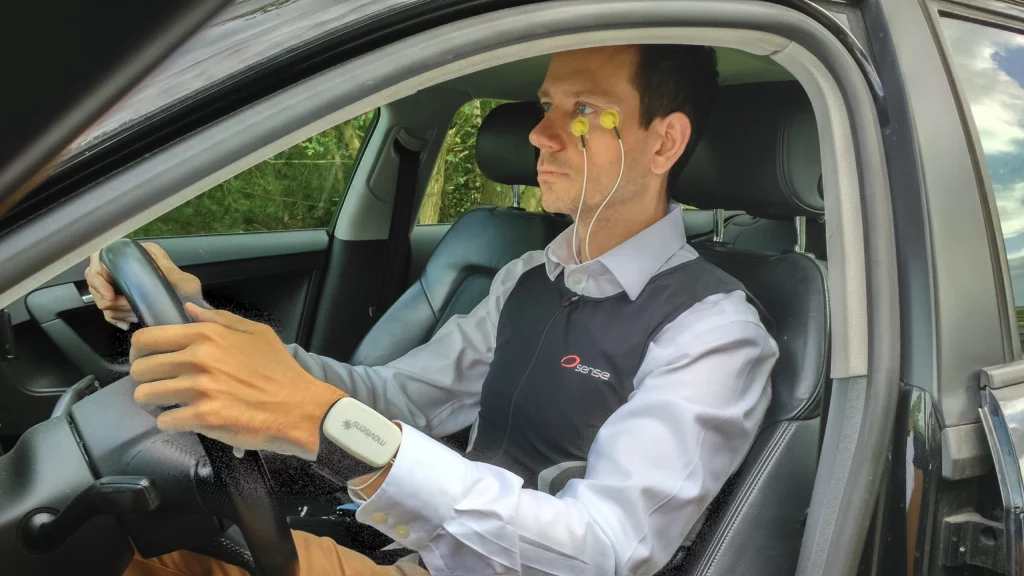
Camera system setup mounted in the cockpit (left) and the monitoring station at the front passenger seat (middle). Participant equipped with various measuring devices (right).
Our Approach
170 male subjects have been exposed to severe sleep deprivation protocols (time since sleep = 30 h). The following driving tasks take place on a test track (1,5 km lap size) in a prepared test vehicle under the supervision of trained instructors and lasted for 4 h. The number of microsleep episodes and the time until the participants suffer from their first microsleep episode are taken as key indicator for the effectiveness of the fatigue countermeasures. The applied fatigue countermeasures are electrical stimulation, vibration based stimulation, and blue light exposure. Additionally driving data (lateral lane based driving errors, usual steering maneuver, unusual acceleration and braking behavior), behavioral data (eye gaze behavior, lid behavior), and psychophysiological data (EEG, ECG, Pupil size) are recorded.
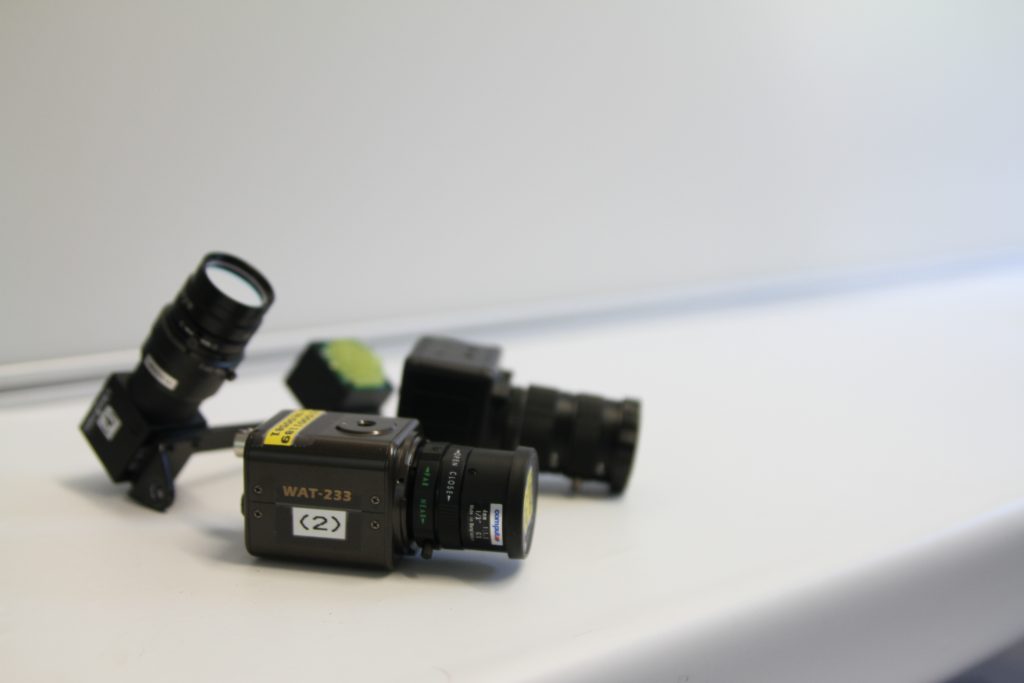
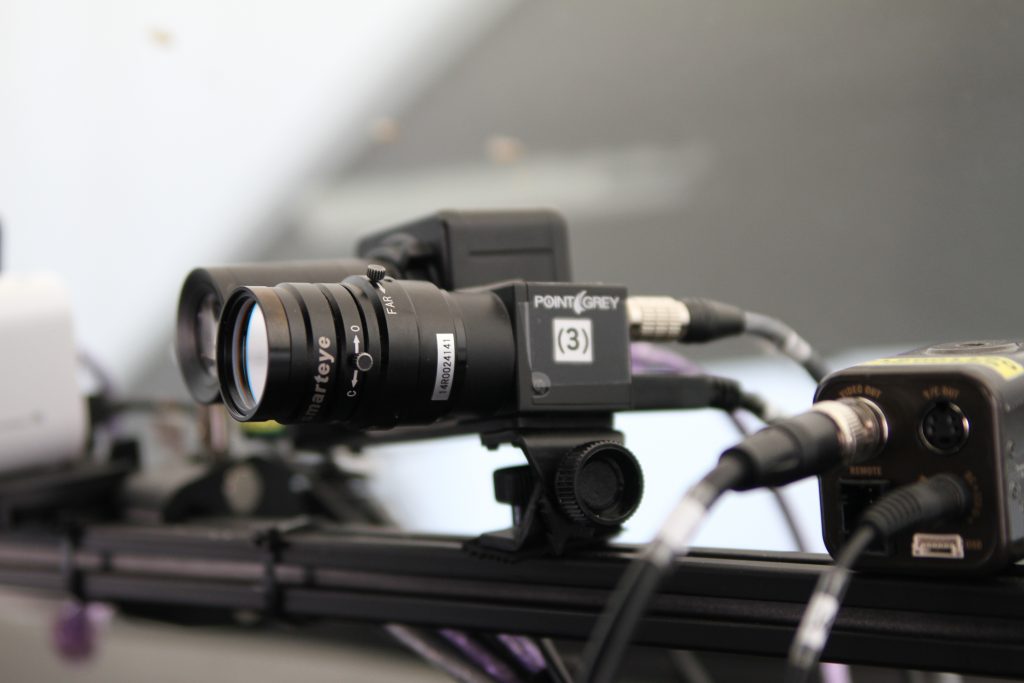
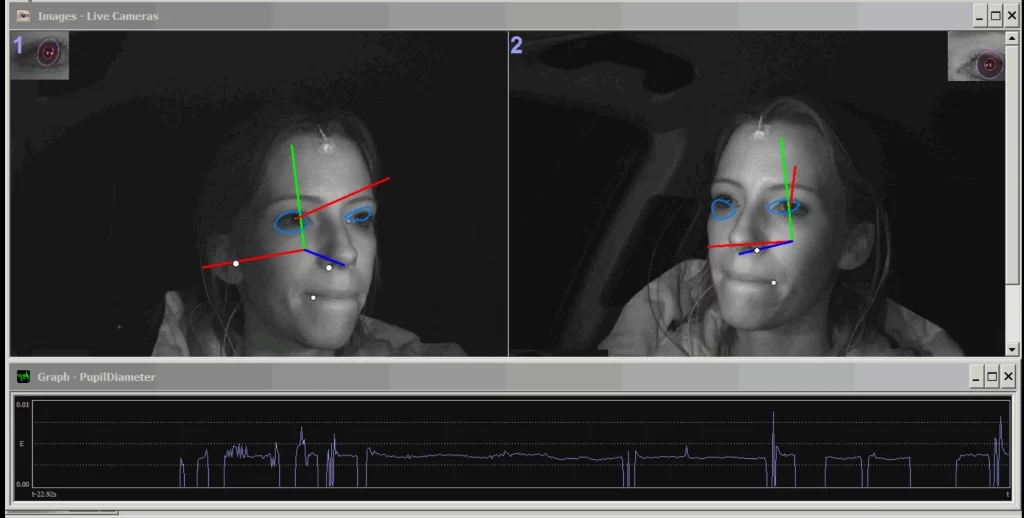
Smart Eye Pro cameras for eye tracking with a mounted 8mm infrared-passing filter lens, a 120Hz infrared flashlight, and an additional mounted infrared camera for video recording (left, middle); head, eye, pupil and gaze tracking monitoring output (right)
Project Insights and Outcomes
Electrical stimulation, vibration-based stimulation, and blue light exposure demonstrated only modest effects in delaying or preventing the onset of microsleep episodes. While these interventions influenced fatigue-related parameters to a limited extent, their overall impact on reliably preventing critical lapses in attention remained minimal under conditions of severe sleep deprivation.
Microsleep event during test drive
Microsleep detection EEG driving simulator
Related Projects
Sudden sickness, distraction, and mind wondering detection by camera and audio based approaches for hand over situations in autonomous driving
Camera-Based Monitoring of Safety-Critical Driver Conditions
Evaluation of multiple fatigue intervention systems
Multimodal physiological measurements of mental workload for evaluating ADAS
